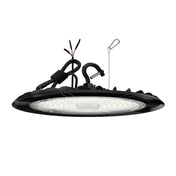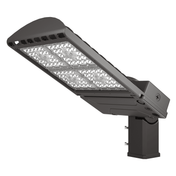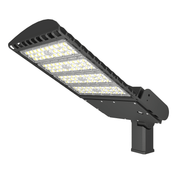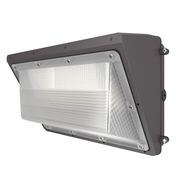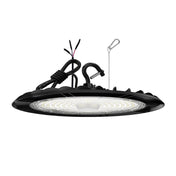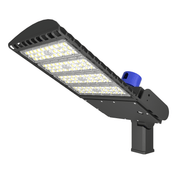The Color Rendering Index (CRI) is a quantitative measurement that assesses how well a light source renders the true colors of various objects compared to natural or standard light sources.
When it comes to choosing lighting, there are several factors to consider. One crucial aspect that is frequently overlooked is the Color Rendering Index. Let’s take a look at CRI and why it is essential to consider when choosing your lighting.
What is the Color Rendering Index?
The Color Rendering Index, or CRI, measures how accurately a light source shows the true colors of an object. It is measured on a scale from 0 to 100, with 100 indicating perfect color rendering matching the spectrum of natural sunlight. A high or ultra-high CRI value means that the light source provides an accurate representation of colors, while a low CRI value indicates a less accurate rendering. Color accuracy is important for certain applications, such as portrait studios, retail stores, hospitals, medical and commercial offices, display cases, and warehouses, where telling the difference between similar colors is crucial.

The Science Behind CRI
The color rendering index measures how closely an artificial light source's spectrum matches that of natural sunlight. Natural sunlight contains a broad spectrum of wavelengths, allowing us to see colors in their truest form. An artificial light source with a higher CRI will have a spectrum closely resembling natural sunlight, ensuring that colors appear true to life. In contrast, an artificial light source with lower CRI values may have gaps or spikes in its spectrum (usually around the wavelengths emitting red), leading to inaccurate perceptions. The spectral graph below can be helpful in understanding the advantages of high-CRI light sources.

Lights with a high CRI are also helpful for individuals with light sensitivity. As the color rendering index improves, the light spectrum expands, showing more red variations decreasing the blues range. A higher CRI can make a light more visually comforting.
How Do You Measure CRI?
Measuring CRI involves comparing the chromaticity, or the quality of a color measuring purity and wavelength, of an artificial light to that of a reference light. Reference lights are chosen based on the correlated color temperature (CCT) of the light that is being tested. For a light with a CCT of less than 5000K, the reference light is a black body radiator. If the CCT is greater than 5000K, then the reference is daylight.
A “standard observer,” or software modeling the color response of the human eye, observes artificial light projected onto various color swatches. The first 8 “R” values of the “Ra” system (R1–R8) are most commonly used for color rendering tests, but other Ra values may be used for more in-depth calculations. An "R" score is then determined for each color sample by calculating the difference in reflected color between the artificial light and the predetermined reference light measurements. A formula computes an average of these R values to evaluate a light source's overall CRI.

Which CRI is Best for Me?
The recommended CRI rating for any given space varies based on the purpose and activities taking place.
- Living Spaces: A CRI of 80+ is recommended to create a warm and inviting atmosphere while accurately rendering colors.
- Offices: Office environments benefit from a CRI of 80+ to boost productivity, reduce eye strain, and enhance concentration.
- Art Galleries and Museums: To showcase artwork in its truest form, lighting with a 90+ CRI is commonly used.
- Retail Spaces: Retailers often opt for 90+ CRI to make products look appealing and true to color.
- Photography studios*: Photography and video studios should use 90+ CRI lights to ensure minimal color correction is required during post-production.

*While CRI is the most commonly used metric to determine color rendering based on human eye perception, it fails to account for how camera equipment detects color. For broadcast and film applications, pay attention to the TLCI, or Television Lighting Consistency Index, measurements instead.
We sell a variety of 80+ CRI downlights, light bulbs, UFO high bays, Linear high bays, and can lights. We also carry a selection of high CRI LED light strips with 90+ CRI and a brand-new line of commercial downlights with an ultra-high 95+ CRI.
What about non-daylight color temperatures?
For simplicity, we’ll assume the color temperature of the above example is 5000K, and compare it to a 5000K natural daylight spectrum to calculate the CRI.
But what if we have a 3000K LED lamp and want to measure its CRI?
The CRI standard specifies that the daylight spectrum is used for color temperatures of 5000K and above, but the Planckian radiation spectrum is used for color temperatures below 5000K.
Planckian radiation is essentially any light source that emits light by producing heat. This includes incandescent and halogen light sources.
So when we measure the CRI of a 3000K LED lamp, we’re comparing it to a “natural” light source with the same spectrum as a 3000K halogen spotlight.
(While halogen and incandescent lamps have terrible energy efficiency, they produce a full, natural, and excellent spectrum).
What are some common CRI values? What is acceptable?
80 CRI (Ra) is a general benchmark for acceptable color rendering for most indoor and commercial lighting applications.
For applications where color appearance is important for indoor work or helps improve aesthetics, 90 CRI (Ra) and above may be a good starting point. Lamps in this CRI range are generally considered high CRI lamps.
Types of applications that may require a 90 CRI (Ra) for professional reasons include hospitals, textile mills, printing plants, or paint shops.
Areas where improved aesthetics may be important include high-end hospitality and retail stores, residential homes, and photography studios.
When comparing lighting products with CRI values above 90, it is helpful to compare the individual R values that make up the CRI score, especially CRI R9.
CRI in Summary
The numerous benefits of high lighting accuracy have made it a top priority for customers in today’s marketplace. The one of the immediate benefits is a significant improvement in the quality of life for customers, employees and other users due to the improved color rendering which eases eye strain and overall stress levels. An additional benefit for business owners and operators is a reduction in workplace accidents and an improvement in efficiency as a result of increased visibility.


